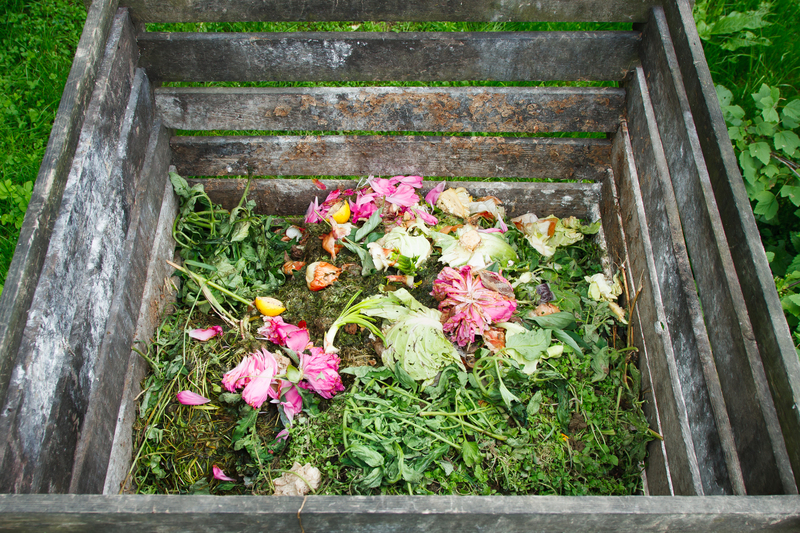Replacing Plastic: Best Eco Substitutes
Posted on 12/04/2025
With the growing awareness of environmental issues, the need for sustainable alternatives to plastic has become more pronounced. Plastic pollution has reached alarming levels, impacting our oceans, wildlife, and even human health. As a result, there's a pressing need to find viable substitutes that are environmentally friendly and equally functional. In this article, we'll delve into some of the best eco-friendly substitutes for plastic, exploring their advantages and potential applications.
Why We Need Eco-Friendly Substitutes
Plastic has been a revolutionary material due to its versatility, durability, and cost-effectiveness. However, these same properties have also contributed to its environmental impact. The key problems with plastic include:
- Non-biodegradability: Most plastics take hundreds of years to decompose, leading to long-term pollution.
- Microplastics: Small plastic particles contaminate water sources, soil, and enter the food chain.
- Toxic chemicals: Many plastics release harmful chemicals during production and degradation.
The necessity for eco-friendly substitutes stems from these significant drawbacks. Sustainable alternatives aim to reduce environmental impact while maintaining the utility of plastic.

Best Eco Substitutes for Plastic
Several innovative materials are emerging as replacements for plastic. Below are some of the most promising eco-friendly substitutes.
1. Biodegradable Plastics
Biodegradable plastics, often derived from natural sources like cornstarch or sugarcane, decompose more quickly than traditional plastics. These materials can break down in industrial composting facilities, leaving minimal environmental impact.
Advantages:
- Reduces landfill waste
- Can be composted under the right conditions
- Lower carbon footprint than conventional plastic
Applications: Biodegradable plastics are suitable for packaging, disposable cutlery, and agricultural films.
2. Plant-Based Plastics
Plant-based plastics, or bioplastics, are made from renewable resources like corn, sugarcane, or cellulose. They mimic the properties of traditional plastic but with a reduced environmental impact.
Advantages:
- Derived from renewable resources
- Can be recycled or composted
- Lower greenhouse gas emissions during production
Applications: Commonly used for packaging, bottles, and some consumer goods.
3. Glass
An age-old material, glass is a sustainable alternative to plastic, especially for containers and packaging.
Advantages:
- 100% recyclable without loss of quality
- Non-toxic and safe for food contact
- Long lifespan and reusable
Applications: Widely used for bottles, jars, and food storage containers.
Innovative Materials Leading the Change
In addition to the more commonly known substitutes, several innovative materials are paving the way for a sustainable future.
4. Mushroom Packaging
Mushroom packaging, made from mycelium (the root structure of mushrooms), is an innovative and eco-friendly solution.
Advantages:
- Fully biodegradable and compostable
- Renewable source material
- Can be molded into various shapes
Applications: Often used for protective packaging and insulation materials.
5. Seaweed-Based Materials
Seaweed and algae are being explored as substitutes for plastic in packaging and other applications.
Advantages:
- Abundant and renewable source
- Biodegradable and compostable
- Non-toxic
Applications: Used for edible packaging, films, and bioplastics.
6. Hemp Plastics
Hemp, a versatile and fast-growing plant, is another renewable resource being used to create biodegradable plastics.
Advantages:
- Biodegradable and compostable
- Strong and durable
- Lower environmental impact compared to traditional plastics
Applications: Suitable for automotive parts, packaging, and consumer goods.

Challenges and Considerations
While eco-friendly substitutes for plastic offer numerous benefits, they also come with challenges that need to be addressed for widespread adoption.
Cost and Scalability
One major challenge is the cost of production and scalability of new materials. Traditional plastic manufacturing processes are highly optimized and cost-effective, making it difficult for alternatives to compete.
While the initial cost of eco-friendly substitutes might be higher, economies of scale and advancements in manufacturing technology are expected to bring down costs over time.
Consumer Adoption
Consumers play a crucial role in the shift towards sustainable materials. Increased awareness and willingness to pay a premium for eco-friendly products can drive demand and encourage producers to adopt greener alternatives.
Education and awareness campaigns are essential to inform consumers about the benefits and availability of sustainable substitutes.
Regulations and Incentives
Government regulations and incentives can accelerate the adoption of eco-friendly materials. Policies that ban certain single-use plastics, promote recycling, and offer subsidies for green technologies can create a more favorable environment for sustainable alternatives.
Collaborations between governments, industries, and research institutions can also foster innovation and help overcome technical and economic barriers.
The Path Forward
Replacing plastic with eco-friendly substitutes is a multifaceted challenge that requires cooperation and commitment from all stakeholders. While there is no one-size-fits-all solution, the combination of plant-based plastics, biodegradable materials, and innovative alternatives like mushroom packaging and seaweed-based products offers a promising path forward.
By focusing on sustainability, innovation, and consumer education, we can mitigate the environmental impact of plastic and move towards a greener future. The transition may be gradual, but with sustained effort, we can create a world where eco-friendly materials are the norm, not the exception.
In conclusion, addressing the plastic pollution crisis requires a comprehensive approach that includes developing and adopting sustainable substitutes. Through innovation, collaboration, and consumer awareness, we can reduce our reliance on plastic and contribute to a healthier planet.




